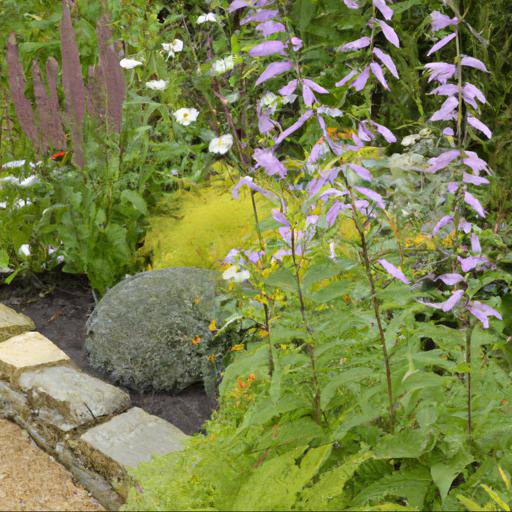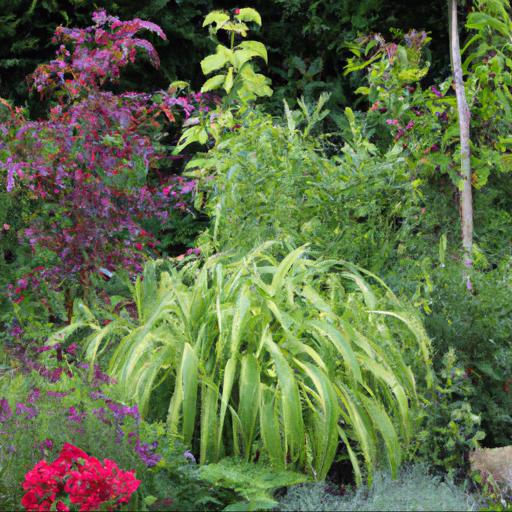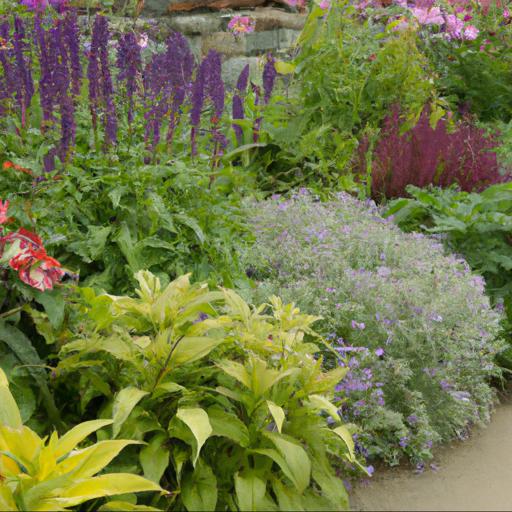Are you looking for the perfect plants to create an east-facing border in your garden? East-facing gardens can be tricky to design due to the reduced light exposure, but with the right plants you can create a stunning display that will last all year round.
In this blog, we will discuss the best plants for an east-facing border and how to care for them. We’ll also look at how to create the perfect east-facing border and how to use the right plants to make the most of the limited light. So, if you’re looking to create a beautiful east-facing border, read on to find out more!
Benefits of planting an east-facing border

Welcome to my blog about the benefits of planting an east-facing border! East-facing borders can provide an elegant and colorful frame for your garden or outdoor space. There are a number of reasons to include an east-facing border in your gardening scheme.
From the best plants to grow in this spot to providing a perfect backdrop for sun-loving annuals, this post will provide an overview of the benefits of installing an east-facing border. Begin by considering the positioning of the east-facing border.
With the morning light coming from the east, this spot will receive plenty of sunlight in the early morning hours. This makes it the perfect spot for plants that need extra light, such as daylilies, peonies, and roses. Many of these plants won’t thrive in a shadier spot, but an east-facing border ensures they have the light and warmth they need to flourish.
Then, there’s the range of annuals that will do well in an east-facing border. Zinnias, marigolds and cosmos are all perfect for adding vibrant swathes of color to this area.
They’re easy to grow and can provide a wonderful burst of color to the garden between spring and early autumn. Best of all, planting the annuals in close proximity to each other creates a stunning visual effect, emphasizing the natural beauty in the outdoor space.
Finally, east-facing borders provide a perfect spot for hardy evergreen plants and shrubs. Shade-loving plants such as rhododendrons, junipers, and holly provide a beautiful silhouette even in winter and can spread to provide a great backdrop to the late summer blooms. In conclusion, an east-facing border provides plenty of benefits for the experienced gardener or newbie alike.
It’s a great spot for plants that need a bit of extra light, perfect for planting annuas, and a great home for hardy evergreens. With some careful planting, a desirable and colorful outdoor space can be created.
Types of plants suitable for an east-facing border

Having a garden facing east brings with it a myriad of potential. A lot of plants thrive when in this position as the days start brightly, and provide enough time for them to reap the benefits of the morning’s sunlight before the build up of heat begins later on in the day.
You’ll need to select carefully however, as you’ll want to pick plants that can tolerate a moderate amount of direct sunlight, as well as some that will add the extra bit of color and texture to spice up your garden. For a splash of vibrancy, consider planting Dahlias or Chrysanthemums. These two varieties create a wonderful show of color, with Dahlias being a particularly popular choice due to their wide range of sizes and shapes available.
These are ideal as they’re sun loving and bloom in a range of shades. They perform best when planted in the spring and deadheaded regularly. For a greener alternative, hostas will always shine bright in an east-facing garden, particularly the variegated varieties that are a sight for sore eyes.
Hostas are both attractive and easy to look after; a light soil and consistent watering is enough to keep them happy. Finally, Heucheras (also known as Coral Bells) make for a great addition to any garden due to their colorful foliage.
Not only are they attractive and neat plants, they also grow well in rock gardens and thrive in partial shade. Heucheras come in a variety of colors and can be easily incorporated into the existing theme of your garden.
No matter what you choose, there is an abundance of colorful and diverse plants available to be planted in an east-facing garden. So make sure you give your plants the right care and maintenance and enjoy a flourishing, healthy garden all year round.
Tips for planting an east-facing border

Creating an amazing east-facing border can be a daunting task. There are many things to consider; what plants to pick, where to position them, how you will maintain them all season.
Thankfully, there are tips, tricks and expert advice to help you create a truly stunning border.
When picking plants for an east-facing border, the main consideration should be the amount of sunlight they will receive. East-facing borders will receive the most sun during the early hours of the day, so selecting plants that can handle full morning sun is essential.
Some plants that are well suited to this kind of border are sun-loving perennials like Gaillardia, Shasta daisy, and Lamprocapnos spectabilis (bleeding heart). All of these plants bring bright colours to a garden and will give the most colour when planted together. It’s also important to pick plants that are drought tolerant for an east-facing border.
If not properly cared for, these hot border spots can dry up quickly in times of insufficient rain. Succulents, for example, are great for this area as they are able to go long periods of time without water. Additionally, grasses such as Miscanthus, Stipa, and Hakonechloa Macra hold up well in hotter climates, and will add movement and texture to the border.
In terms of maintenance, an east-facing border should be pruned to let in more light, and fertilised at least once a year. This will help your plants to grow and stay healthy throughout the summer.
Additionally, it’s important to monitor your plants carefully throughout the season and be prepared to water them frequently. Taking the time to properly care for your east-facing border will ensure that your plants remain healthy and vibrant for years to come.
Our video recommendation
Final Touch
This article provides an overview of plants that are suitable for an east-facing border. It recommends shrubs such as Forsythia, Weigela and Buddleia, as well as perennials such as Lavender, Coreopsis and Achillea.
It also suggests ornamental grasses, roses and other flowering plants for a vibrant and colourful display. With careful selection and planning, an east-facing border can be a stunning addition to any garden.
FAQ
What plants are best suited for an east-facing border?
Plants that thrive in partial shade and require minimal maintenance are best suited for an east-facing border. Examples include hostas, ferns, astilbes, and impatiens.
What type of soil is best for an east-facing border?
The best type of soil for an east-facing border is a well-draining, nutrient-rich soil with a slightly acidic pH.
What are the best maintenance practices for plants in an east-facing border?
The best maintenance practices for plants in an east-facing border include providing adequate sunlight, watering regularly, fertilizing, pruning, and mulching. Additionally, it is important to check for pests and diseases and take necessary steps to control them.
What are the best sun and shade requirements for plants in an east-facing border?
The best sun and shade requirements for plants in an east-facing border will depend on the type of plants being grown. Generally, plants that prefer full sun should be planted in the sunniest areas of the border, while plants that prefer partial shade should be planted in the shadier areas.
What are the best watering requirements for plants in an east-facing border?
The best watering requirements for plants in an east-facing border depend on the type of plants and the climate. Generally, plants in an east-facing border should be watered deeply and infrequently, allowing the soil to dry out between waterings. In hot climates, plants may need to be watered more frequently.
What are the best fertilizing requirements for plants in an east-facing border?
The best fertilizing requirements for plants in an east-facing border depend on the type of plants in the border. Generally, plants in an east-facing border should be fertilized with a balanced fertilizer, such as a 10-10-10 or 20-20-20, once a month during the growing season. Additionally, adding compost or manure to the soil can help provide additional nutrients to the plants.

